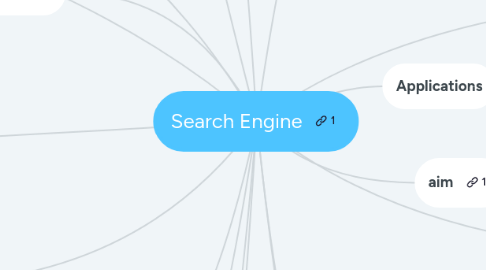
1. The percentage of visitors that leave a website (or “bounce” back to the search results or referring website) after viewing only one page on that site.
2. squash the infor down into a tiny package
3. basics 5 components
3.1. words
3.1.1. common use words
3.2. title
3.2.1. official title
3.3. links
3.3.1. between websites
3.4. words in links
3.4.1. words place in links
3.5. reputation
3.5.1. fresh, engaging content and growing no of quality links
4. generate results using an algorithm based on user's search criteria
5. what they do
5.1. scan & analyse pages
5.2. evaluate the content -> what key information should be indexed
5.3. deliver them to the search engine
5.4. record key information abt page - title, description, keywords, links
5.5. copy the page & deliver them to the search engine
6. what does it do
6.1. automatically visits websites
6.2. records and indexes them within its database
7. components
7.1. crawlers / spiders / bots
7.1.1. basic job -> index a page so that it is available to be used as a search result
7.2. indexer
7.2.1. a huge DB -> infor store
7.2.2. when u click search -> DB is being searched
7.3. query processor
7.3.1. user performs a search -> 1. looks up their index --> 2. provides using its own algorithm ---> most to least relevant
8. metasearch engine
8.1. all-in-one search engine
8.2. duplicated retrievals are eliminated
8.3. advantage: a single query can access many search engines at once
8.3.1. performs a search by the use of more than one other search engine to complete the search job
8.4. disadvantage: a high noise-to-signal ration - a lot of matches will not be suitable for the user
9. fuzzy matching
9.1. A process that locates Web pages that are likely to be relevant to searched keywords even when the keywords do not exactly correspond to the desired information
9.2. can operate like a spell checker and spelling-error corrector
9.3. can compensate for common input typing errors
10. techniques
10.1. quatation marks ""
10.1.1. searching for exact phrases
10.2. wildcards *
10.2.1. tag all spellings of the word starting
10.3. boolen search
10.3.1. logical operator
10.3.1.1. narrows the search by retrieving only records containing both keywords used in the search statement
10.3.1.2. AND
10.3.1.3. OR
10.3.1.3.1. broadens your search by retrieving either one or more of the keywords used in the search statement
10.3.1.4. NOT
10.3.1.4.1. excludes records containing the second keyword in your search statement
10.4. parenthesis ()
10.4.1. to control the logic of the query and they may appear in any combination.
11. SEO
11.1. The process of maximising the number of visitors to particular website by ensuring that the site appears high on the list of results returned by Search Engine.
11.2. Purpose: Communicating to Search Engines website’s intentions so they can recommend that website for relevant searches.
11.3. what SE are looking for
11.3.1. content
11.3.1.1. theme, text, title, and description page
11.3.2. authority
11.3.2.1. good content
11.3.3. user experience
11.3.3.1. look & feel of a website
11.3.4. performance
11.3.4.1. fast loading
11.4. what SE are not looking for
11.4.1. keyword stuffing
11.4.1.1. overuse keywords
11.4.2. purchased links
11.4.2.1. Will get a website nowhere when it comes to SEO
11.4.3. poor UX
11.5. bounce rate
12. makes web pages easier to find and use
13. returns results that are relevant to searcher's query
14. Applications
14.1. enables users to search the web using keywords
14.2. acts as a catalogue for the web
15. aim
15.1. ranks the results according to the popularity of the website serving the information
16. metadata
16.1. Enhances the accessibility of data, whilst also enhancing usability for everyone
16.2. data about data
16.3. 3 important components
16.3.1. page title
16.3.2. keywords
16.3.3. description
17. four possible for bad search
17.1. no content
17.2. bad search pharses
17.3. bad search engine
17.4. bad content
18. getting a website discovered
18.1. 1. creating and submitting a sitemap
18.1.1. A sitemap is an XML document on a website’s server.
18.1.2. It tells search engines when new pages have been added and how often to check back for changes on specific pages.
18.1.2.1. Google XML plugin
18.1.3. how to create
18.1.3.1. XML sitemaps generator
18.1.4. A sitemap can be submitted to Google Webmaster Tools.
18.2. 2. installing google analytics
18.2.1. Web Analytics service that is provided by Google to track and report website traffic
18.3. 3. submitting website to search engine
18.3.1. Website can be submitted to a Search Engine directly
18.3.2. This can speed up the indexing process
18.4. 4. via social profiles
18.4.1. Crawlers get to a website via links.
18.4.2. nofollow links: Do not allow search engine crawlers to follow the link. Only Humans will be able to follow the links.

